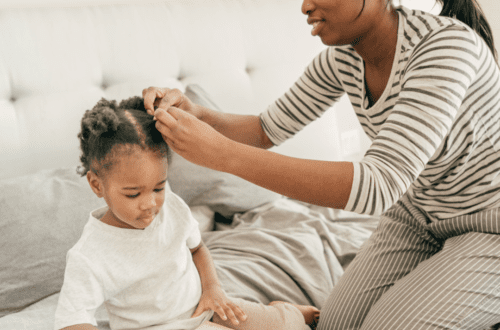
Shedding vs. Hair Loss: Things to Consider
Hair loss, shedding, and thinning of the hair can be a big deal. For most of us, the idea of losing precious strands often puts us on edge. For those who carry the burden of hair loss, there is often a significant emotional component in addition to the physical change that has occurred.
There can be several factors, some internal and some external, that affect the growth and the loss of hair. While healthy living and intentional practices can be beneficial in either case, it is important to know what the cause of your hair loss is. This helps you to adequately prepare for and address any issues that may arise.
Today, we’re taking a closer look at our hair’s growth cycle and how internal and external influences can affect the normal growth and loss of hair.
The normal hair growth cycle
Your hair grows in cycles. On average, the entire growth cycle repeats every four to five years. Each complete cycle has three phases called the anagen, catogen, and telogen phases.
- Anagen phase “Growth phase” – is when new hair is produced. The longer (time) the hair is in the anagen phase the longer (length) the hair will grow. Typically, about 90 percent of your hair will be in the anagen phase at any given time. This phase usually lasts 2-5 years, but could be as long as 10 years.
- Catogen phase “Transition period” – the brief time between the anagen and telogen phases when the hair changes in preparation for the telogen phase. This phase is the shortest of the phases lasting only one 1 to 3 weeks with less than one percent of your hair being in this phase at a time
- Telogen phase “Resting Phase” – the final phase in the hair growth cycle which lasts until the hair is shed (this could be anywhere from 3 to 6 months). Roughly ten percent of your hair will be in the telogen phase at a time. During this phase, hair will either shed on its own or be pushed out by the new hair growing from the follicle. The anagen phase begins immediately after the hair is shed.

Did you Know: Fun facts about scalp hair
- A woman’s hair will grow faster than a man’s
- The average rate of hair growth is a half of inch per month
- Hair grows rapidly between the ages of 15 to 30, but will drastically decrease by age 50
Shedding vs. hair loss
We all lose hair on a daily basis. Your genetics, the density and texture of our hair, hormonal balances, and hair care routines can influence the extent of hair loss. Daily loss as a result of your hair moving through the growth cycle is normal shedding. At any given time, different strands of hair on our head are moving through these different phases resulting in the loss of hair. These shed strands are replaced immediately by new strands as they move into the anagen phase.
Alopecia, abnormal hair loss not due to shed hair, is more frequent in men than women, but the results can be equally devastating. There are several types of abnormal hair loss, all which can be influenced by internal and external stressors. Hair loss caused by alopecia can be gradual or sudden and the loss hair is typically not replaced by new hair strands.
Common reasons of hair loss
There can be several types and causes of abnormal hair loss, below are some of the more common causes in both men and women.
- Alopecia areata – an autoimmune disease resulting in the significant loss of hair in patches. This hair loss can be sudden or progressive and result in total hair loss of the scalp (alopecia totalis) or complete body hair loss (alopecia universalis)
- Androgenic alopecia – thinning of the hair strands caused by age, genetics, and hormonal imbalances
- Post-partum alopecia – temporary hair loss seen at the end of pregnancy lasting up to 12 months post-partum.
- Traction alopecia – stress to the hair follicle caused by styles (braids, wigs, ponytails, etc.) that are too tight or cause excessive friction to the hairline
When to see a professional
Any significant hair loss should be a cause for concern. If you notice hair loss that is more significant than usual, excessive thinning, excessive loss without regrowth, or you believe you have a problem with alopecia; consult a professional. Depending on the type and extent of hair loss, health professionals may be able to prescribe treatments to help counteract or slow the progression of hair loss.
Normal hair loss should not be a cause for concern. Healthy hair moving through the growth cycle sheds. The beauty is in knowing that that shed strand is already being replaced by a new strand that is ready to thrive.
While one post can’t treat or cure any significant issues, it can equip you with knowledge to make informed decisions concerning your hair care. At Bold Kulture Beauty, it is our mission to empower you with the tools and knowledge needs to be successful on your healthy hair journey.
Visit us today for more info on stress-free healthy hair care and to see how we can help you on your natural hair journey.
References




